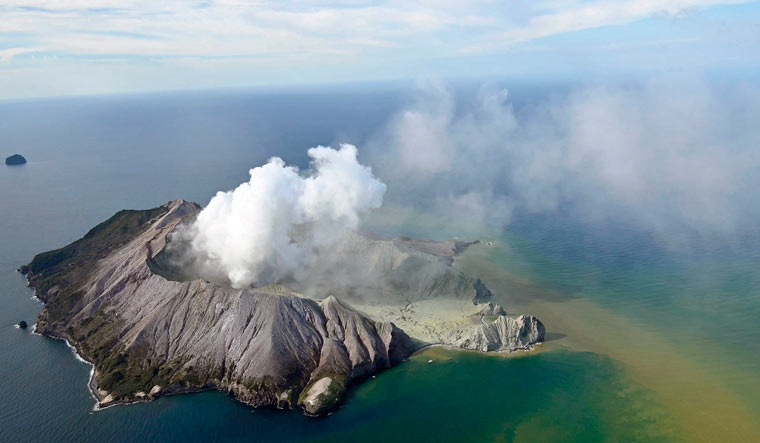A New Zealand volcano erupted when about 100 tourists were nearby. The volcano situated on White island, which is also known as Whakaari erupted on Monday causing injuries that are yet unaccounted for.
The volcano erupted on the island that is frequented by tourists
Prime Minister Jacinda Ardern said "Some of those, at this stage, are unaccounted for," "A number of people are reportedly injured and are being transported to shore." She said the incident appeared to be "very significant." "All our thoughts are with those affected," she added.
Geological hazard trackers GeoNet agency said a moderate volcanic eruption had occurred and raised its alert level to four, on a scale where five represents a major eruption.
White Island is about 50 kilometres (30 miles) offshore from mainland New Zealand about northeast of the town of Tauranga on North Island, one of the nation's two main islands. Questions will be raised as to why tourists were still able to visit the island after scientists recently noted an uptick in volcanic activity.
At least 20 people from the island have been taken for medical attention.
Police had been asking people to avoid areas on the North Island that were close to the eruption, including the Whakatane Heads and Muriwai Drive areas.
The island, which is home to New Zealand's most active volcano, became a private scenic reserve in 1953 and allows more than 10,000 people to visit the volcano each year.
In 1914, when the volcano was being mined for sulphur, twelve people were killed on the island when part of a crater wall collapsed and a landslide destroyed the miners' village and the mine itself. Volcanologist Michael Rosenburg said that over the past few weeks there had been an increase of sulphur gas from deep inside the volcano, but that did not necessarily mean an eruption would take place.


